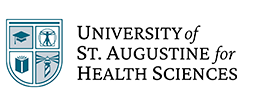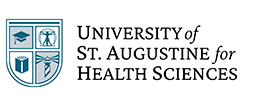
When your clinical rotations begin, so does one of the most exciting phases of your Doctor of Physical Therapy (DPT) program. Your rotations are a chance to bring your classroom knowledge to life, learn how clinics function, and start working with patients in a clinical setting. But the first few weeks can also be nerve-wracking, as you navigate the challenges of working with a mentor and applying new skills. Here are 8 tips on how to work with your clinical instructor (CI) and make the most of your rotations.
- Reach out to your CI regarding logistics. Before your first day, ask your clinical instructor about logistics such as parking, dress code, and what your schedule will look like. How many clients will you be seeing per day? What is their age range, and what are some typical diagnoses? Will you be working on an interprofessional team of therapists? Does the clinic emphasize any specific techniques or skills? This information will give you an idea of what to expect and will help you narrow your focus as you move to the next step.
- Brush up on the basics. Hit the books the week before you start, reviewing diagnoses, basic exam techniques, and therapeutic interventions. Practice hands-on skills like vitals, reflexes, goniometer measurements, and common tests. You’ll go into your first day with more confidence. You’ll also avoid needing to review basic skills with your CI, freeing up time to discuss advanced theories and techniques.
- Communicate with your CI now and throughout the experience. Early on, have a conversation with your CI about your goals for this clinical experience and your CI’s expectations for your learning and performance. Do some self-reflection on your own learning style and communicate about this with your CI. Also ask your CI what their learning and teaching style is, and discuss how you both can adjust for differences. Check in often about your performance (see #7 below) and keep the channels of communication open throughout the experience. Also find out how the patient documentation process works at this clinic. Ask if you can receive handouts that explain what’s needed and why.
- Have confidence in your abilities. You’ve already learned a lot in your physical therapy courses and labs, and you’re more prepared than you may realize. Even if you’re nervous, try to project an appropriate level of confidence, since this is reassuring to patients.
- But don’t overcompensate. If your go-to feeling is confidence even in new situations, that’s great—but make sure you know what you’re doing when you’re treating patients. If a situation arises that you aren’t sure about, it’s better to hang back and follow the advice in Tip 6.
- Accept the fact that you will make mistakes. Your clinical rotations are designed for learning. There’s no shame in making the inevitable mistakes. In fact, it’s better to do so in this structured environment where you can receive guidance from your CI and analyze the situation with them so you can handle it differently next time. Your CI will expect this as part of their job.
- Prepare to receive feedback. Another key aspect of your CI’s role is to offer constructive criticism on your work. It can be challenging to receive such feedback without getting defensive—but keep in mind that its purpose is to help you improve as a practitioner. Try to avoid getting upset, blaming someone or something else, debating the validity of the feedback, or dismissing the comments. Instead, try to listen carefully to the concerns and ask clarifying questions. Work on the issues and follow up with your CI a few weeks later to check your progress.
- Ask for help when you need it. If you don’t ask, your CI and colleagues will assume you are fine. If you do ask, they will most likely be happy to help. Remember that asking for help isn’t a sign of weakness or ignorance—rather, it demonstrates your professionalism, desire to improve, and commitment to patient care. Eventually, you will be in a position to mentor others—but for now, accept the valuable opportunity to be mentored and to grow.
Once you finish your clinical rotations, graduate from your degree program, and pass the licensure exam, you will be ready to launch your career in physical therapy. You may even want to start your own PT clinic! It’s a good idea to find a PT mentor who can advise you through these beginning stages. Onward to an exciting career helping patients improve their health and movement!
The largest PT school in the United States,* the University of St. Augustine for Health Sciences (USAHS) offers a hands-on Doctor of Physical Therapy (DPT) degree. Practice with mock and real patients in our state-of-the-art simulation centers and learn anatomy with our high-tech tools. Prepare for clinical practice with a wide range of patients, as well as advanced roles in research, practice leadership, and policymaking. Residential and Flex (online/weekend) paths are available.
*Based on total DPT degrees conferred, as reported by the Integrated Postsecondary Education Data System (IPEDS). Data is captured by IPEDS through interrelated surveys conducted annually by the U.S. Department of Education’s National Center for Education Statistics (NCES). https://nces.ed.gov/ipeds/
Sources
“Baugh, Jessica, PT, DPT. “Advice from a CI: What I Want Students to Know Before Starting Clinical Rotations.” APTA. June 11, 2018. http://www.apta.org/Blogs/Pulse/2018/6/CI/. Accessed: January 25, 2022
“Clark, Allison. “Advice to Me on My First Day of Work.” HospitalRecruiting.com. May 3, 2018.https://www.hospitalrecruiting.com/blog/3677/advice-to-me-on-my-first-day-of-work/. Accessed: January 26, 2022
“Melnick, Jacob. “Advice to Students – 4 Things to Consider When Entering the Clinic.” Evidence of Motion. March 22, 2019. https://evidenceinmotion.com/advice-to-students-4-things-to-consider-when-entering-the-clinic/. Accessed: 01/26/2022
“Stearns, Zach. “Three Things I Wish I Knew Before I Started My Clinical Rotations.” APTA. Last modified April 4, 2017. https://www.apta.org/Blogs/Pulse/2017/4/Clinicals/.






